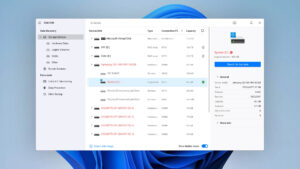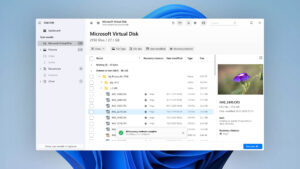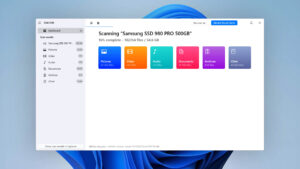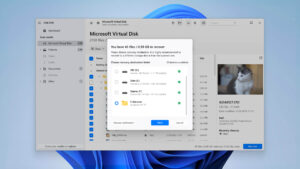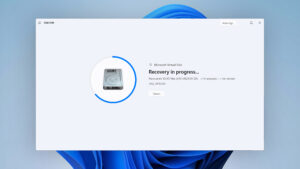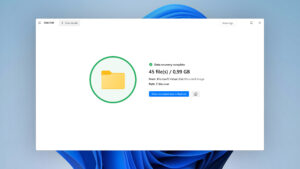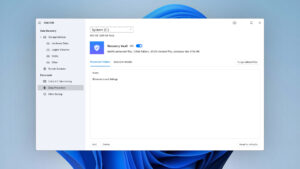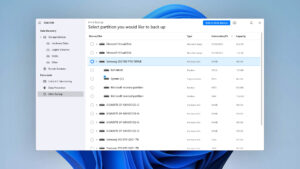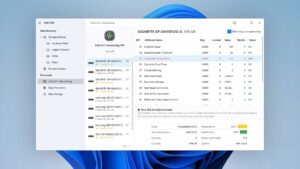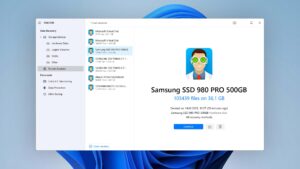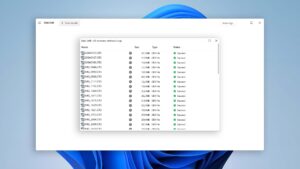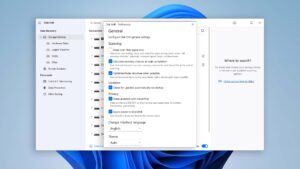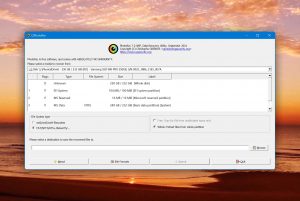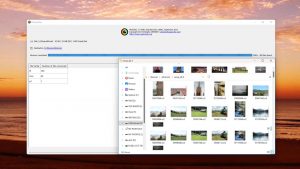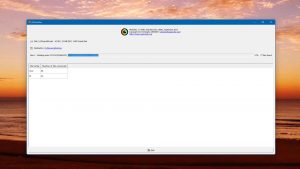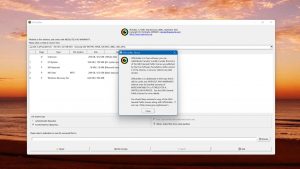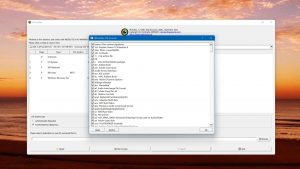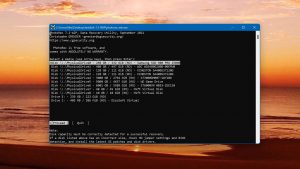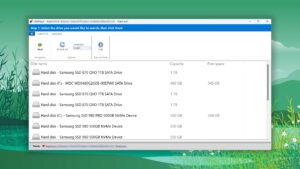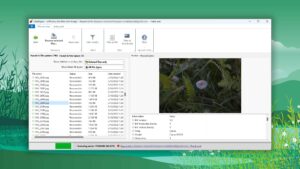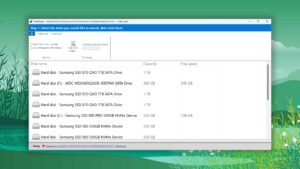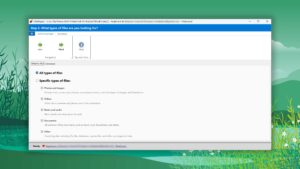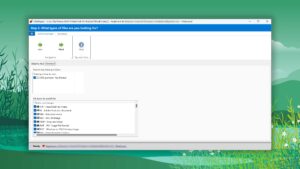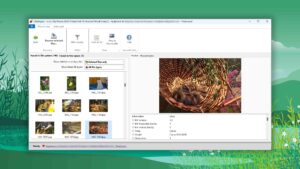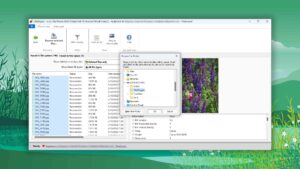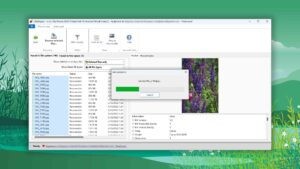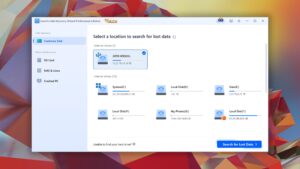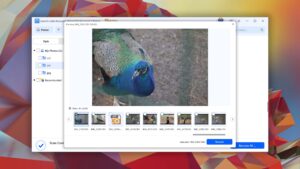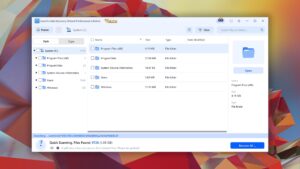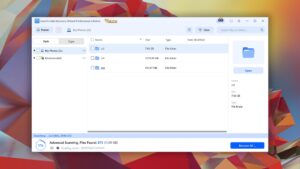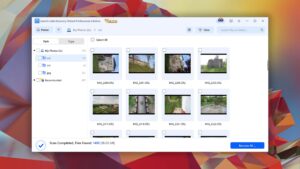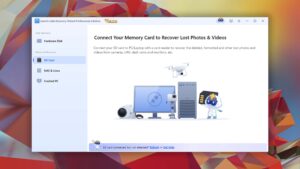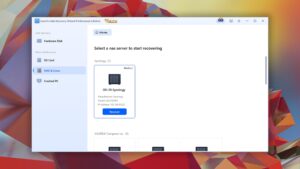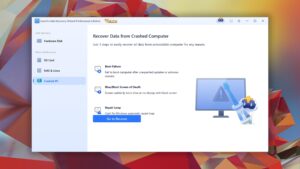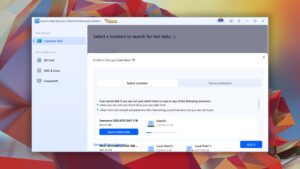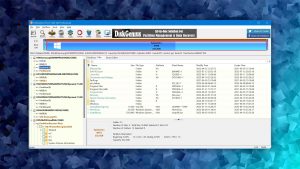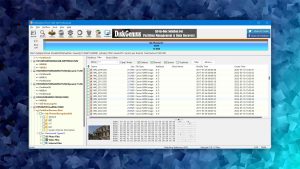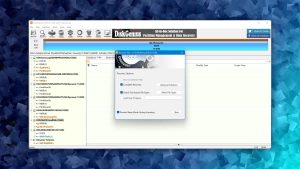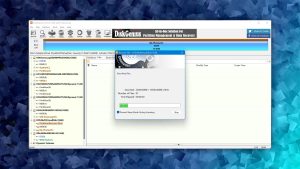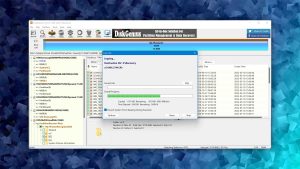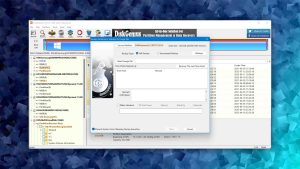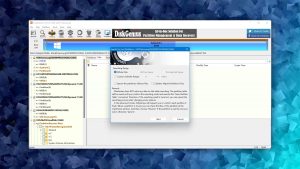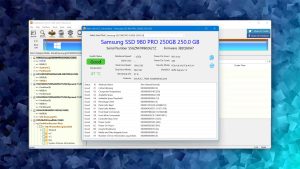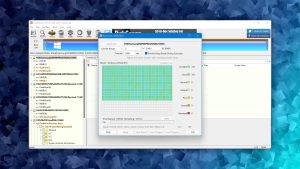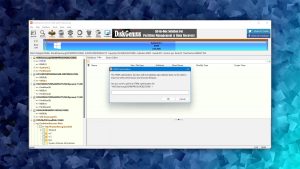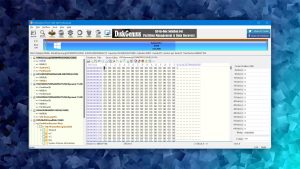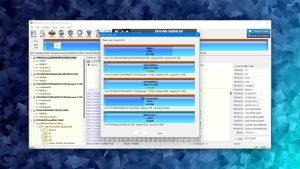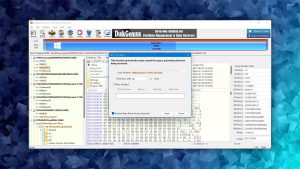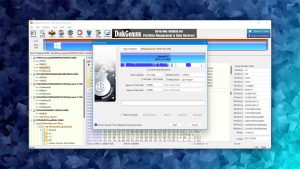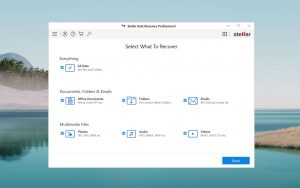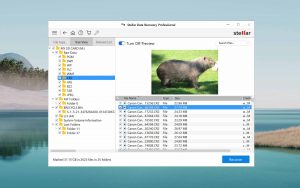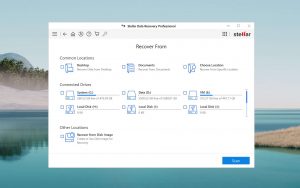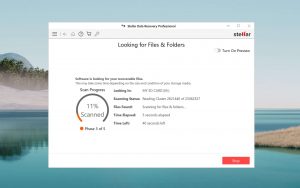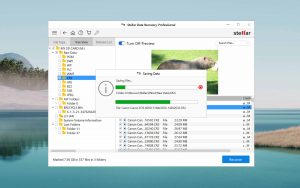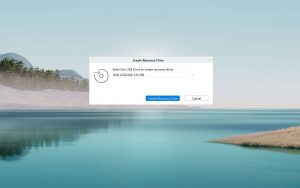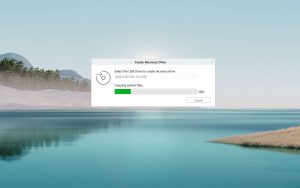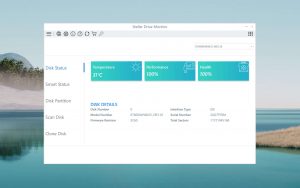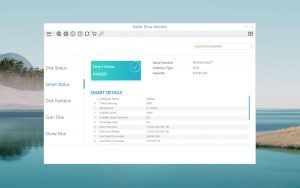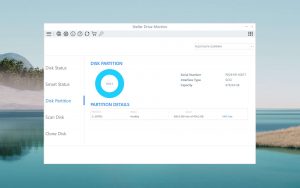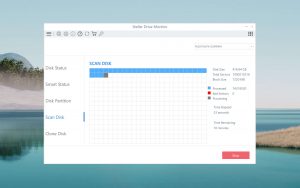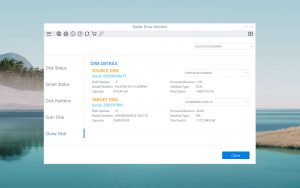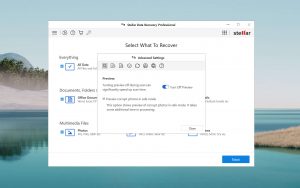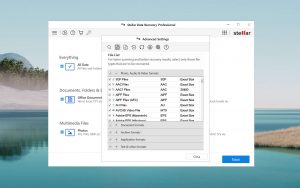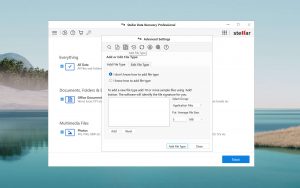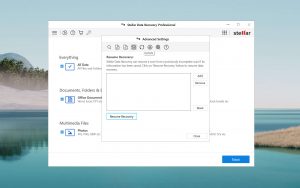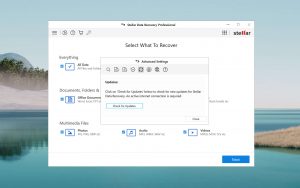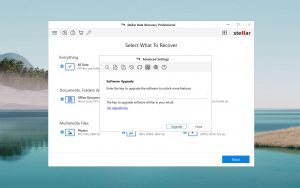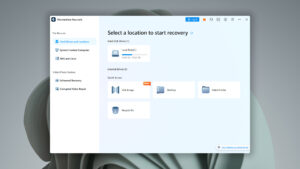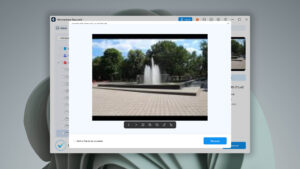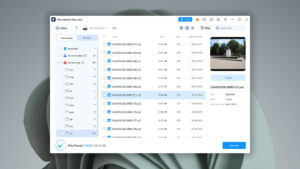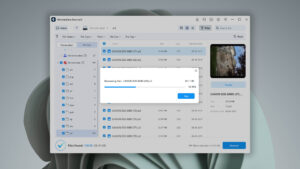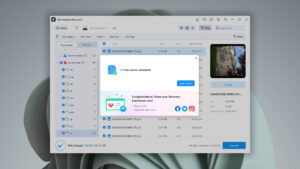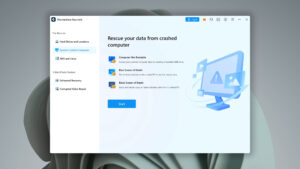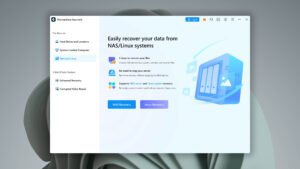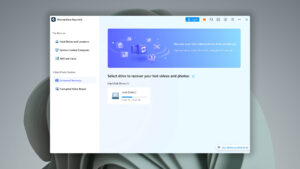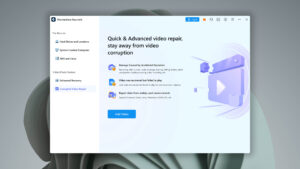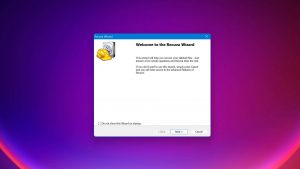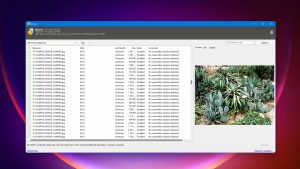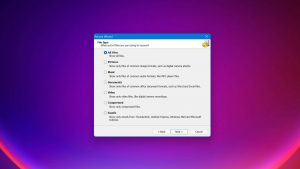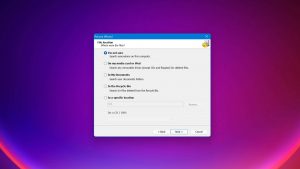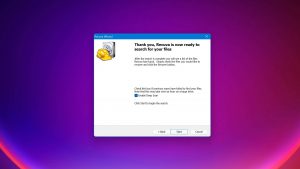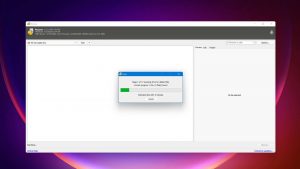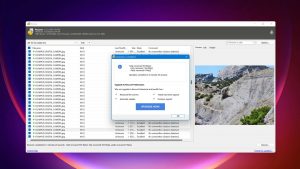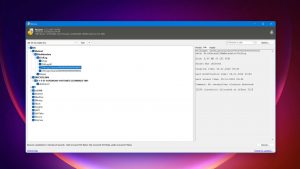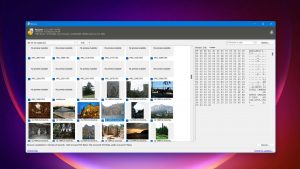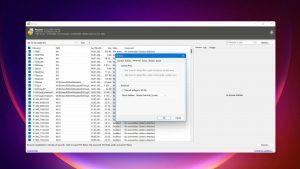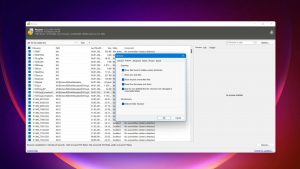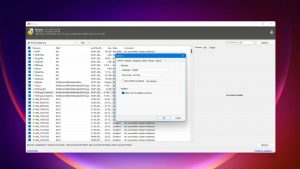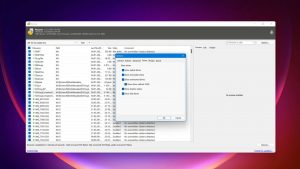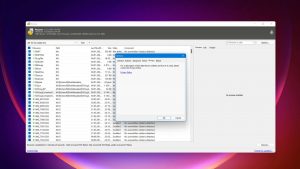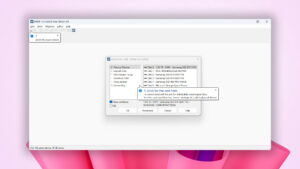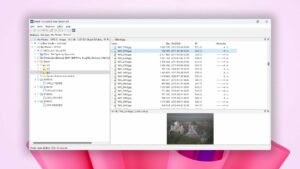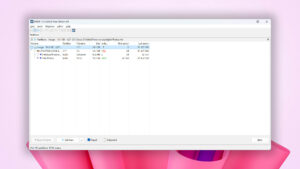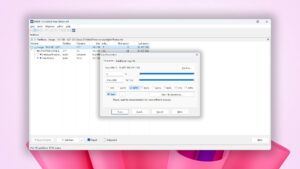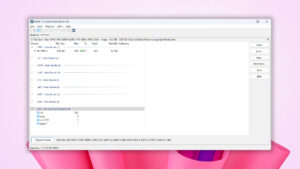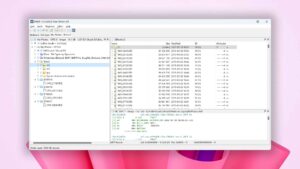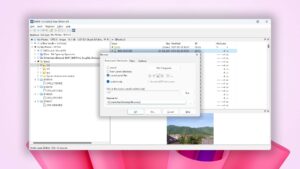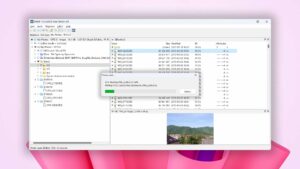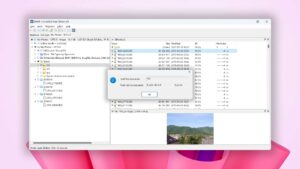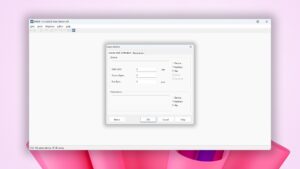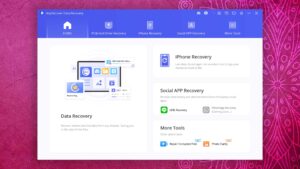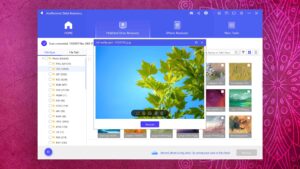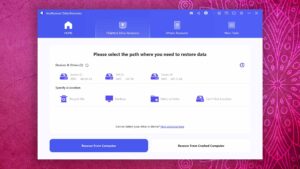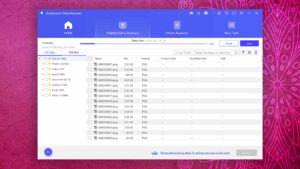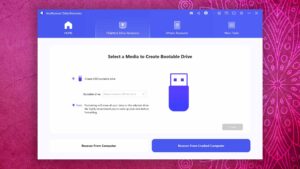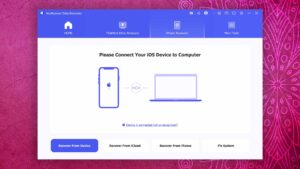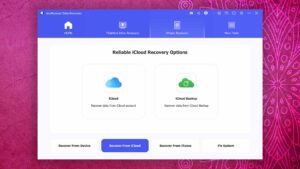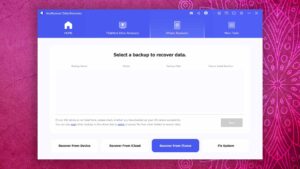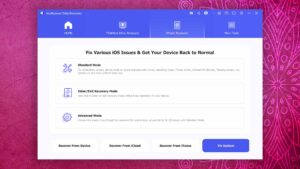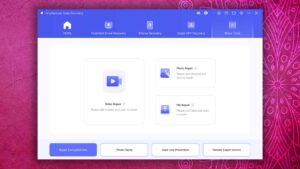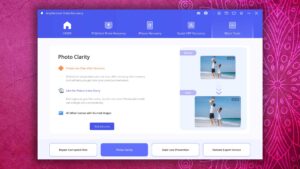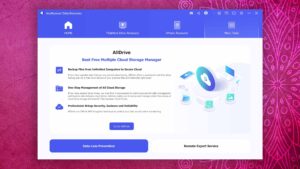10 Best Photo Recovery Software Solutions for Your Missing Images
Photos can bring back memories and remind us of the moments spent with those who are closest to us, which is why losing just a single important picture can feel utterly devastating – almost as if you lost the memory itself. The good news is that most lost or accidentally deleted photos can be recovered using photo recovery software, and we know which applications are the best.
| Platform |
|
| Distributed as | Freemium |
| Limitations | Recover up to 500 MB for free |
| Price range | $89...$598 |
| Platform |
|
| Distributed as | Free |
| Limitations | Metadata recovery |
| Price range | Free |
| Platform |
|
| Distributed as | Freemium |
| Limitations | 5-second delay after each recovered file |
| Price range | $0...$14.99 |
The Criteria We Use for Evaluating Photo Recovery Solutions
These are the selection criteria we used when assessing the photo recovery software for Windows and Mac. Keep in mind that not all parameters carry equal weight, and we may have sacrificed some of them for the main one – the ability to recover data.
- Our review results
Our mission is to bring honesty into the data recovery software review niche by conducting in-depth data recovery software reviews that explore what available applications are truly capable of. We evaluate each software using a weighted average score on a 5-point scale, which forms the basis of our ratings. Of course, we base listicles such as this one on our test results to provide you, our dear readers, with the best solutions for your needs.
- Usability
We gave preference to software with a simple, modern, and intuitive interface because not everyone is a data recovery expert, and not everyone should become one just to recover lost data. An intuitive user interface can provide a seamless recovery experience by allowing users to, for example, easily select a suitable recovery destination or narrow down the scan results to show only specific types of files, such as photos.
- Recovery capabilities
A photo recovery software can be considered "best" only if it can recover all file formats commonly used by digital cameras, smartphones, and other photo-taking devices. This includes RAW photo files formats that are used to store information for the camera's sensor directly without any post-processing applied to it. In our tests, we focused on around 40 file signatures from the "photo and image" category, including key RAW formats such as CR2, NEF, DNG, and ARW, prioritizing software solutions that can deliver excellent recovery results when used to recover them.
- System compatibility
We focused on software that works natively on both Windows and Mac platforms and supports their latest and older versions alike. We also prioritized solutions updated every 6-12 months to maintain compatibility, as new versions of Windows and Mac are released regularly.
- File system support
Another crucial evaluation parameter we took into consideration is the ability of the software to recognize different file systems and recover original file names and folder structures. This can make a huge difference when recovering a large number of files because it greatly simplifies their subsequent organization.
- Scan speed
We prioritized photo recovery tools with efficient scanning performance. This often-overlooked factor can make a huge difference when recovering large amounts of photos from high-capacity memory cards, internal and external drives, and other storage devices.
- Extra features
There are several extra features we looked for because they can make a huge difference when recovering photos. These include byte-to-byte backup capabilities to turn a damaged storage device into a disk image or the ability to work with storage devices that have suffered a file system damage.
- Price
Knowing how precious and irreplaceable photos can be, we focused on tools that deliver the best value for money possible. We tried to include as many free software and software with generous trial periods as possible, but still prioritized the price-to-quality ratio.
- Photo previews
Digital cameras typically name photos automatically using a combination of letters and numbers, such as "DSC_0001.JPG" or "IMG_1234.CR2". Even if the file names can be recovered, they provide little to no information about the content of the photo, making it difficult for users to identify which images they want to recover. That's why it's essential for photo recovery software to be able to generate previews before recovery and allow users to visually identify and select the photos they want to restore.
10 Best Photo Recovery Software to Recover Your Images
#Now that you know our criteria, it’s time to take a closer look at the top 10 best photo recovery software solutions for Windows and Mac!
1. Disk Drill
4.55 • Best choice for Windows users – The Windows version of Disk Drill empowers regular users to reliably recover all kinds of lost data with a few simple clicks.
macOSWindows
Freemium Some features are provided free of charge, but money is required to unlock the rest
Recover up to 500 MB for free
$89...$598
Disk Drill is a popular photo recovery software application for Windows and macOS. It has been downloaded more than 10 million times by home users and professionals alike, who like its powerful undelete capabilities and one-click approach to recovery, among many other things. With Disk Drill, you can recover all popular image file formats, as well as image file formats you’ve probably never heard of.
Usability
Disk Drill's got your back when it comes to picture recovery with its intuitive design, perfect for users of any skill level. The scanning process is presented in real-time, so you'll always know how many files have been found and how much time is left. What's more, the results are organized into three easy-to-navigate categories: Deleted or lost, Existing, and Reconstructed. You'll also appreciate the advanced filters and multiple view options that make it a breeze to find exactly what you're looking for. All commonly used photo file formats can be previewed directly within Disk Drill's interface and recovered with a click.
Recovery Performance
Disk Drill can handle a vast array of photo file formats, including raw photos captured by popular cameras, camcorders, and smartphones (NEF, CR3, RAF, SRF, and SRW, for example, are all supported). In many situations, The application can even recover the original file structure after formatting or partition loss, so just because Windows or macOS can't access the files stored on your memory card doesn't mean that Disk Drill can't recover them. In our in-depth review, the photo recovery software earned 91% out of 100% for its recovery performance, which is more than any other solution we've ever tested, and that says a lot.
Value
Disk Drill's value is hard to beat. Unlike many other software, Disk Drill offers a PRO version in the form of a lifetime license, not a monthly payment. The free Windows version allows you to recover up to 500 MB of data, while the Mac version can preview an unlimited amount of data. Disk Drill also includes a range of useful features like S.M.A.R.T. data analysis and data protection that make its cost-effective lifetime licenses even more attractive than they already are. Despite not being completely free, it easily secured the top spot in our list due to its impressive performance, wide range of features, and excellent price-to-quality ratio.
2. PhotoRec
3.36 • Intimidating but rewarding at the same time – PhotoRec for Windows offers unbeatable value, but you need to overcome a steep learning curve to unlock it.
macOSWindowsLinux
Free All features are provided free of charge, and the software can be used, studied, and modified without restriction
Metadata recovery
Free
PhotoRec is the best free deleted photo recovery software distributed under GNU General Public License (GPLV v2+). Being primarily a command-line application, it can easily scare away less computer-savvy users, but an optional GUI for Windows is available.
Usability
The program's optional graphical user interface makes it more approachable for Windows users, while its portable nature means you can launch it without installing it on your system. Though PhotoRec is known for being lightweight and capable of running on low-end computers, its interface may slow down during the scanning process, and selecting the device you want to scan can take some effort. The terminal version of PhotoRec isn't beginner-friendly, but with some patience, users can navigate the software to achieve great results.
Recovery Performance
PhotoRec's recovery performance is primarily driven by its robust signature scanning capabilities, which enable the software to identify and recover over 480 file extensions. As a multi-platform data recovery application, PhotoRec supports several popular file systems across Windows, macOS, and Linux, including FAT, NTFS, exFAT, ext2/ext3/ext4, and HFS+. To fully utilize PhotoRec's recovery capabilities, users need to be aware that not all signatures are selected for scanning by default. To include all available signatures in the scanning process, users must manually click multiple checkboxes.
Value
PhotoRec is a fantastic option for those looking for free and open-source picture recovery software. As a user, you don't need to purchase a license to recover your lost pictures regardless of how many you're missing. Sure, customer support is limited to volunteer forums, and there's a lack of additional functionality beyond data recovery, but that's to be expected. After all, you should never look into the gift horse's mouth. Overall, PhotoRec's advantages, such as its powerful recovery performance and being a free and open-source solution, are significant enough for it to secure second place on our list despite its UI drawbacks, the inability to recover data with original names, and the need to manually select what you want to recover,
3. DiskDigger
3.41 • Simple and cheap, but with mediocre results – DiskDigger is a budget-friendly data recovery solution for those who aren’t looking for a tool that has all the bells and whistles.
macOSWindowsLinuxAndroid
Freemium Some features are provided free of charge, but money is required to unlock the rest
5-second delay after each recovered file
$0...$14.99
DiskDigger is a portable, lightweight photo recovery software with a decent signature scanner, though its interface has issues on high DPI monitors. It offers free recovery with some limitations and supports quick and signature scans, providing a cost-effective solution for users looking to recover lost photos.
Usability
With no installation required, the 1.7 MB application can be easily transferred to any storage media, making it convenient for users on the go. DiskDigger's small size doesn't compromise its functionality, as it still offers a decent signature scanner for file recovery. However, it's worth noting that the program doesn't work well on high DPI monitors, resulting in a blurry interface and difficulties changing the interface language.
Recovery Performance
When it comes to recovery performance, DiskDigger has room for improvement. Although it offers free recovery, the software only supports quick and signature scans, with no clever scanning options. Unfortunately, its quick scan feature delivers subpar results on both Windows (FAT32, exFAT, and NTFS) and Linux (EXT4) partitions, often failing to find lost data. On the upside, DiskDigger supports most devices, and its signature scan abilities are fairly decent, offering plenty of hope for users in need of photo recovery (even raw image formats are supported well). Additionally, DiskDigger has an Android version, allowing users to scan their devices without connecting to a computer.
Value
The absence of disk copying and limited file preview options may deter some users, but for those seeking a cost-effective photo recovery solution, DiskDigger is worth considering. That's because the free license allows users to recover as much photos as they want but with a 5-second delay between each recovery.
4. EaseUS Data Recovery Wizard
3.86 • Popular for its trial recovery capabilities – Easy to use and capable of delivering solid results, EaseUS Data Recovery Wizard is good at what it does.
macOSWindows
Freemium Some features are provided free of charge, but money is required to unlock the rest
Recover up to 2 GB for free
$69.95...$799
Since 2004, EaseUS has been offering a broad range of software tools intended to help users manage their data, including EaseUS Data Recovery Wizard, a complete data restoration solution for Windows computers.
Usability
EaseUS Data Recovery Wizard offers an intuitive interface, making it simple for users to navigate scan results. Scanning is fast, so you don't have to wait long for your results. However, there are some drawbacks, such as frequent pop-up ads for other products that can't be turned off and limited preview capabilities for popular photo formats.
Recovery Performance
While EaseUS Data Recovery Wizard provides above-average performance and reliably recovers commonly used file formats from Windows-supported file systems, it does have some issues. For example, it struggles with FAT32 and exFAT scanning, resulting in lost original folder structures, overlooked small files, and corrupted directories. This is a major issue because these two file formats are commonly used to format memory cards and external storage devices. Although the software can recover various raw photo file formats, support for some camera brands, like Sigma, is lacking compared to others, like Nikon.
Value
The free version of EaseUS Data Recovery Wizard allows you to recover up to 2 GB of data, which is quite a generous offer, as long as you agree to mention the product on a social media network. However, the cheapest license is a monthly subscription costing $69.95, and lifetime upgrades start at $149.95, which might be a bit steep considering the limitations in some areas. Overall, though, it remains a decent option for those in need of photo recovery software.
5. DiskGenius
3.70 • More than just regular data recovery – DiskGenius is a feature-rich data recovery solution that equips its users with a highly technical toolset to tackle complex data recovery situations.
macOSWindows
Freemium Some features are provided free of charge, but money is required to unlock the rest
Only small files can be copied
$69.9...$699.9
DiskGenius is a 2-in-1 disk manager and data recovery tool with surprisingly impressive RAW photo recovery capabilities. Just be prepared for a steep learning curve if you don’t consider yourself to be particularly a tech-savvy individual.
Usability
Navigating DiskGenius can feel like a trip down memory lane—straight back to the Windows XP era. The software's interface hasn't quite caught up with the modern designs we've come to expect. That's especially problematic because the application is packed with far more features than your typical photo recovery tool. This makes it even more difficult to navigate and locate the specific functions you need. At least the software offers extensive filtering options, so separating lost photos from other recoverable data is painless.
Recovery Performance
When it comes to data recovery performance in general, DiskGenius doesn't deliver particularly impressive results, but where it shines is in RAW photo recovery. The software can retrieve a large number of RAW formats, such as CRW, ERF, KDC, MEF, or NEF, making it a great choice for photographers who have lost precious files. However, it's worth noting that some popular formats like Canon's CR2 and CR3 are not well-supported. This could be a deal-breaker for professionals using those specific formats, so it's something to keep in mind when considering DiskGenius for your recovery needs.
Value
DiskGenius is a one-time investment that pays dividends when it comes to the sheer number of features it offers. You can choose between three different tiers—Free, Standard, and Professional—each unlocking a richer set of capabilities. Even the free version packs a punch, offering complex partition management and disk cloning, albeit with a 64 KB file recovery limit.
6. Stellar Data Recovery
3.38 • Frequently recommended – Stellar Data Recovery is a good example of data recovery software that doesn’t to anything exceptionally wrong nor exceptionally right.
macOSWindows
Freemium Some features are provided free of charge, but money is required to unlock the rest
Recover up to 1 GB for free
$59.99...$599
Previously known as Stellar Phoenix Photo Recovery, Stellar Data Recovery is an accessible photo recovery software with the ability to repair photos and videos. Its free version offers 1 GB of data recovery, but upgrading to a subscription plan can be costly.
Usability
Stellar Data Recovery is an easy-to-use photo recovery software that's accessible to users of all skill levels. The biggest usability highlight the application has to offer is the ability to seamlessly repair photos and videos that would otherwise not open even after being recovered. The biggest drawbacks include slow previews, limited preview capabilities, and the inability to view and restore files during a scan.
Recovery Performance
While Stellar Data Recovery is accessible, its performance falls short of the best photo recovery applications available. Many commonly used file formats can't be recovered without manual intervention, and some crucial scan types yield disappointing results. What's also disappointing is that many raw file formats are unsupported by the software's signature scanner, and only a few formats are supported well.
Value
Stellar Data Recovery provides a generous free version, allowing users to recover up to 1 GB of data. However, exceeding this limit can be costly due to the reliance on subscription plans, with lifetime upgrades being an expensive option. That's why we've placed it at its current spot on our list of the best photo recovery software for Windows & Mac.
7. Wondershare Recoverit
3.70 • Can it really recover it? – Wondershare Recoverit comes with an intuitive user interface, but subpar recovery capabilities that struggle to deliver.
WindowsmacOS
Freemium Some features are provided free of charge, but money is required to unlock the rest
Recover up to 100 MB for free
$59.99...$449.96
This easy to use software offers multiple scanning modes to tackle all kinds of photo loss scenarios. While it does well with some raw photo files, many formats remain unsupported. Also, its pricing structure doesn’t offer the best value for users.
Usability
Wondershare Recoverit boasts a modern and up-to-date interface, offering options to scan folders and specific locations like the Recycle Bin. Though this feature primarily enhances user experience, it does little to aid actual recovery. The software allows users to preview images, scaling and flipping them as needed. However, drawbacks include the inability to install without an internet connection, difficulty locating discovered partitions, and no option to save disk scan sessions.
Recovery Performance
The most critical aspect of any picture recovery software is its performance, and unfortunately, Wondershare Recoverit falls short in this area. While it offers multiple scan types for finding lost data, it performed poorly in our tests. The software claims to support 1000 file signatures, but in practice, it struggles to find even common file formats. When it comes to recovering regular and raw photo files, Recoverit does well with JPG, GPR, CR2, and a few others, but there are still many unsupported formats.
Value
Pricing for Wondershare Recoverit starts at $59.99 for the Essential plan and goes up to $99.99 for the Premium plan, which includes bootable media creation and video repair. Users can also download a trial that offers up to 100 MB of free recovery before needing an upgrade. However, accessing the trial version can be confusing, as users need to specifically download Wondershare Recoverit Free. Still, a free version is a free version, which is why we include the software in this listicle.
8. Recuva
3.04 • Good for basic data recovery jobs – Despite its age and lack of development, Recuva is still worth taking a look at—if only because it recovers an unlimited amount of data for free.
Windows
Freeware All features are provided free of charge without any limitations
None
$0...$49.95
Recuva is a free photo recovery software tool from the developers of CCleaner. It features a similar user interface, so all CCleaner users should feel right at home. Due to lackluster development, its performance is limited.
Usability
Recuva, a completely free picture recovery software, offers two operating modes, simple and advanced, to cater to users of different expertise levels, and it supports the largest number of languages among data recovery tools. Recuva also integrates into the system context menu for a fast search of deleted files. Unfortunately, it preview just a few file formats, so choosing the correct pictures for recovery isn't always easy.
Recovery Performance
While Recuva scored only 31% in terms of performance, it was still able to recover a fair amount of lost data. The software struggles with restoring folder structures and file names, often resulting in corrupted files and disorganized recovered data. Scan speeds are decent, averaging between 100-200 MB/sec. Unfortunately, Recuva had difficulty recovering many image file types, with a large portion of DNG files suffering from corruption and all recovered 3FR images being in TIFF format.
Value
Despite its shortcomings, Recuva's most significant selling point is that it's entirely free, allowing users to scan and restore unlimited files without spending a dime despite not being the best choice for recovering digital photos in general.
9. DMDE (DM Disk Editor and Data Recovery Software)
3.61 • UX designer’s nightmare – DMDE is a high-value data recovery application whose biggest downside is its poor usability.
WindowsmacOSLinux
Freemium Some features are provided free of charge, but money is required to unlock the rest
Recover up to 4000 files in the opened directory
$7...$133
DMDE is a great choice for recovering photos from NTFS and HFS+ partitions, but its performance can be underwhelming when it comes to other file systems, including FAT32 and exFAT, which are commonly used in portable storage devices like SD cards and USB flash drives.
Usability
DMDE's usability is its weakest aspect, especially concerning photo recovery. The biggest problem is the inability to preview many photo file formats before recovery, so you may find yourself in the dark as to which file you should select. Typically, the only solution is to select all found files, which somewhat negates DMDE’s fast recovery speed. There’s also the fact that the user interface is clearly designed for advanced users who perform function over form, so beginners could easily feel overwhelmed.
Recovery Performance
DMDE’s signature scanner is average at best, and it has limited support for modern photo formats out of the box (CRW, JP2, MRW, RAW, and RW2 are just some unsupported formats). The good news is that you can add custom file signatures to improve photo recovery capabilities, but this requires additional effort and skills. When recovering photos based on file system information, DMDE the results depend strongly on the condition of the file system. If all information is available, then the performance is good for all Windows file systems and even HFS+ (APFS and EXT4 can also be recovered but with limited results). But if the file system information has been erased, then FAT32 and exFAT recovery performance goes down sharply. Still, the overall performance is solid, and the software earns bonus points for being fast.
Value
DMDE provides a good value proposition for users looking for a cost-effective photo recovery solution. The free version can be used to recover up to 4,000 files per operation, and paid versions start at just $7 per month. Lifetime subscriptions are available as well, so you can choose to pay only once and use the software for as long as you want. Of course, you can’t expect an affordably priced data recovery software to deliver a ton of additional features beyond those closely focused on data recovery. The only truly extra feature offered by DMDE is the ability to clone storage devices (which can be useful when dealing with corrupted storage devices as you can scan the clone instead of the original device), so the software won’t help you, for example, repair corrupted photos.
10. AnyRecover Data Recovery
3.62 • A simple but basic data recovery tool – AnyRecover Data Recovery is a basic data recovery solution targeted at regular users who don’t plan to do more than get their data back.
WindowsmacOS
Freemium Some features are provided free of charge, but money is required to unlock the rest
Preview only
$59.99...$499.99
AnyRecover is one of only a few photo recovery software solutions that support iOS devices. What’s more, it can also repair corrupted photos.
Usability
AnyRecover's modern user interface and fast scanning speed make it a user-friendly choice for photo recovery. The program automatically utilizes multiple scan types, so users don't need to perform them manually. The recovery results screen can be filtered and sorted to make the recovery of certain data faster. However, the need for an additional download just to enable file previews is a bit puzzling. Additionally, AnyRecover doesn’t auto-resume scans of drives that reconnected as the scan was active, which is annoying but easy to overlook.
Recovery Performance
AnyRecover’s overall photo recovery performance would be much better if it wasn’t for its poor ability to restore data upon the formatting of exFAT partitions. The use of the exFAT file system has skyrocketed in recent years among photographers and videographers, and it’s a real shame that the software doesn’t support it well. At least FAT32, NTFS, and Apple’s APFS are supported to a satisfactory degree. Our signature scanning tests of AnyRecover’s raw photo recovery capabilities have awarded the software a rating of 58%. Only a relatively small number of raw photo file formats are not supported at all by the software, including CR3, RW2, and RAW. The rest can be recovered to a smaller or larger extent.
Value
The free version of AnyRecover can be used to preview lost or deleted data, and paid versions start at $59.99 per month. Lifetime subscriptions are also available. Despite the lack of a free recovery option, the software's modern interface and support for iOS device recovery make it an appealing choice for users prioritizing ease of use and specific device compatibility over extensive feature sets and best-in-class performance.
Conclusion
If you’re looking for the best photo recovery software application for Windows or macOS, Disk Drill, PhotoRec, and DiskDigger are all excellent choices. Disk Drill is known for its straightforward user interface and one-click approach to image restoration, making it easy for amateurs and professionals alike to recover all lost or accidentally deleted photos from hard drives, memory cards, USB flash drives, and other storage devices. PhotoRec offers powerful signature scanning capabilities and is a great option for those seeking a free, open-source solution. DiskDigger provides a simple interface and reliable recovery performance, making it another viable alternative for photo recovery.
Was the provided information useful? Your vote is important to use!
Is It Possible to Recover Files from a Device's Internal Memory?
If you’re wondering whether it’s possible to recover files from a camera’s internal memory, the answer is a bit complicated. Most modern devices, including cameras, use the Media Transfer Protocol (MTP) for data transfer. Unfortunately, MTP doesn’t allow for scanning the internal memory of the device or accessing the SD card as a card reader. In other words, it’s not possible to recover data from the internal memory of cameras that rely on this protocol.
In the case of smartphones, the situation is more nuanced. They come equipped with their own TRIM function, similar to that found in SSDs (Solid State Drives). The TRIM function helps maintain optimal performance by cleaning up deleted files and preventing fragmentation. While this feature can reduce the chances of successful data recovery from internal memory, it’s important to note that there is still hope. Thumbnails, cached versions of files, or other duplicates can sometimes be found by scanning, and some data recovery software might be able to retrieve these. So, even though the odds may not always be in your favor, it’s definitely worth giving data recovery software a try—you might just get lucky!
Comparison table
#The comparison table below provides an overview of all data recovery software applications that have made our list.
| Feature | Disk Drill | PhotoRec | DiskDigger | EaseUS Data Recovery Wizard | DiskGenius | Stellar Data Recovery | Wondershare Recoverit | Recuva | DMDE (DM Disk Editor and Data Recovery Software) | AnyRecover Data Recovery |
|---|---|---|---|---|---|---|---|---|---|---|
| Total Score | 100% | 73% | 75% | 85% | 81% | 73% | 81% | 67% | 79% | 80% |
| Requirements | Windows 10-11 (x64 only) | macOS 10.6-14.0 | Windows Vista-11 | Windows 7-11 | Windows 7-11 | macOS 10.11-14.0 | Windows 7-11 (x64 only) | Windows XP-10, 11 (unofficial support) | Windows 98-11 | Windows 7-11 (x64 only) |
| Clever in-depth scan | good | bad | bad | fine | fine | bad | fine | bad | good | fine |
| Quick scan | good | bad | fine | fine | good | bad | fine | fine | good | good |
| Distributed as | Freemium | Free | Freemium | Freemium | Freemium | Freemium | Freemium | Freeware | Freemium | Freemium |
| Trial version available | 1 | 1 | 1 | 1 | 1 | 1 | 1 | 1 | 1 | 1 |
| Trial version limitations | Recover up to 500 MB for free | Freeware. No limits | 5-second delay after each recovered file | Recover up to 2 GB for free | Only small files can be copied | Recover up to 1 GB for free | Recover up to 100 MB for free | Freeware. No limits | Recover up to 4000 files in the opened directory | Preview only |
| Starting price | $89.00/ Perpetual | Free | Free | $69.95/ 1 month | $69.90/ Lifetime | $69.99/ 1 year | $59.99/ 1 month | Free | $7.00/ 1 month | $59.99/ 1 month |
| See Plans & Pricing | Pricing details | Pricing details | Pricing details | Pricing details | Pricing details | Pricing details | Pricing details | Pricing details | Pricing details | Pricing details |
| Raw photo recovery | good | good | good | good | good | fine | good | fine | fine | good |
| Video formats recovery | good | good | fine | good | fine | fine | fine | fine | fine | fine |
| Document formats recovery | good | good | good | good | good | fine | fine | fine | good | good |
| S.M.A.R.T. | good | bad | bad | bad | good | fine | bad | bad | bad | bad |
| Helpdesk support | good | bad | fine | good | good | good | good | bad | fine | good |
| Live chat | good | bad | bad | good | bad | good | good | bad | bad | bad |
| Phone support | bad | bad | bad | good | bad | good | good | bad | bad | bad |
Frequently Asked Questions
How to recover deleted photos without the software?
If you don’t want to use photo recovery software to recover lost images, then we recommend you try the following methods instead:
- check the Recycle Bin/Trash
- check “recently deleted” albums
- check cloud storage
- check if there are hidden files or folders
What is the best photo recovery software for SD cards?
Here are the top 8 best photo recover software applications for SD cards:
- Disk Drill
- PhotoRec
- DiskDigger
- EaseUS Data Recovery Wizard
- DiskGenius
- Stellar Data Recovery
- Wondershare Recoverit
- Recuva
- DMDE
- AnyRecover
What is the best free photo recovery software?
The best free photo recovery software capable of recovering an unlimited amount of data is PhotoRec, followed by Recuva (Windows only).
Can I recover permanently deleted photos?
Permanently deleted photos can be recovered if the location where they were stored is accessible and overwriting hasn’t occurred yet. For example, images accidentally deleted when performing file management tasks using File Explorer or Finder can usually be recovered using photo recovery software.
What is the best photo recovery software for PC?
There are several photo recovery software solutions that all PC users should consider when dealing with a photo-related data loss scenario. Our top picks include Disk Drill, PhotoRec, and DiskDigger.
What is the best photo recovery software for Android?
Unfortunately, there are not many photo recovery software solutions that run natively on Android, but there is DiskDigger, which can recover lost photos, images, or videos from your internal memory or external memory card.
David Morelo is a professional content writer with a specialization in data recovery. He spends his days helping users from around the world recover from data loss and address the numerous issues associated with it.
When not writing about data recovery techniques and solutions, he enjoys tinkering with new technology, working on personal projects, exploring the world on his bike, and, above all else, spending time with his family.
- Klennet Recovery Review (Formerly Zero Assumption Recovery)
- iBeesoft Data Recovery Review – A Likable Clone With Limited Features
- DMDE Review – A Data Recovery Powerhouse or a Usability Nightmare?
- Cisdem Data Recovery for Mac Review – A Clone in Disguise
- Tenorshare 4DDiG Review – All That Glitters Is Not Gold
- Frisco, Texas, United States
Yevgeniy Tolkunov is Hardware Engineer at ACE Data Recovery. Yevgeniy has a Master's Degree in Physics, Information Technology; 15+ years of experience.

